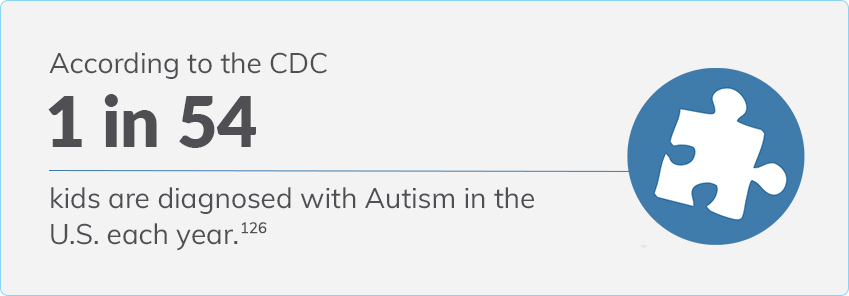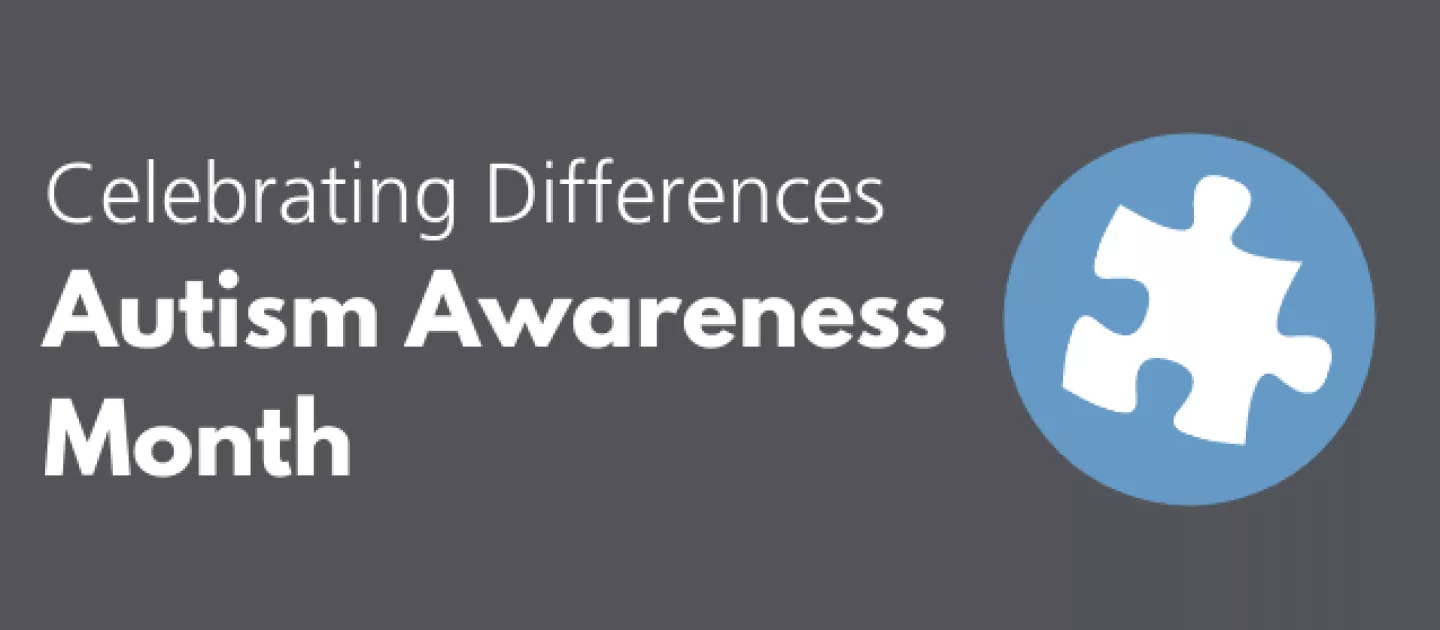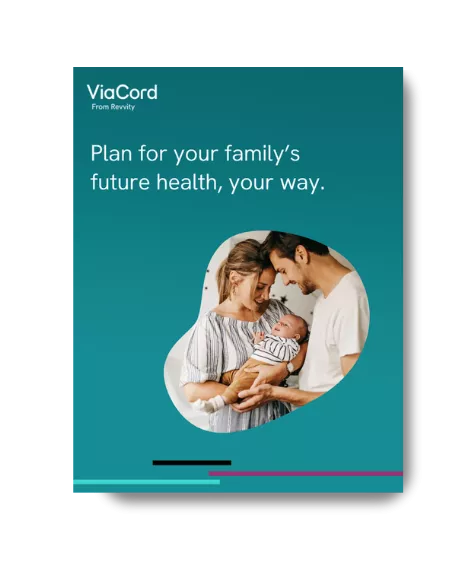Celebrating Autism Awareness Month
Every April, advocates are dedicated to spreading knowledge, promoting acceptance, and creating change for autism. At ViaCord, we like to show our support of Autism Awareness Month by raising awareness about autism and the ongoing research using cord blood and tissue stem cells in clinical trials in an effort to help children with autism.
The Centers for Disease Control recently announced that 1 in 54 kids in the U.S. are diagnosed with autism each year. This incidence rate is up from 1 in 59 kids, making autism awareness more important than ever.
What is Autism Spectrum Disorder (ASD)?
Autism Spectrum Disorder, or ASD, is a developmental disability affecting the brain and characterized by challenges with social skills, repetitive behaviors, speech, and nonverbal communication.1

Can you treat Autism?
There are no current treatments for autism, however, early intervention and a variety of therapies are designed to help improve daily life for children with ASD including speech therapy, sensory therapy, occupational therapy, and behavioral therapy. In recent years, scientists and researchers have started to explore a potential new therapy using umbilical cord blood and umbilical cord tissue stem cells.
Why is cord blood and cord tissue being used in research for Autism?
Scientists are excited about a new era of medicine, known as Regenerative Medicine, which uses living cells to potentially regenerate or facilitate repair by stimulating the body’s own repair mechanisms. Researchers are hoping that the properties of cord blood and cord tissue stem cells can address the causes of degeneration and dysfunction associated with ASD.
What has the research shown so far?
Duke Medical University is at the forefront of a lot of exciting research using cord blood and cord tissue. Let’s look at what’s been going on:
Cord Blood & Autism Research
In 2017, a Phase I Clinical Safety Trial showed that infusing a child with autism with their own cord blood was safe. Many ViaCord families participated in the trial. One family’s experience was featured on national tv. Watch their story below:
In addition to showing that cord blood infusions were safe, other insights came out of the research trial related to Electroencephalography (EEG), which measures electrical activity in the brain over a certain period of time, and white matter, the brain tissue made up of nerve fibers responsible for the connection and transmission of signals, have since shown that cord blood infusions may have contributed to clinical improvements in children with autism. See more details about the insights on our website.
Phase II of this important clinical trial wrapped up at the end of 2019, and the outcome data is currently being analyzed. Published results will determine if there’s a benefit from an infusion of a child’s own cord blood or an unrelated donor cord blood in children with autism.
Cord Tissue & Autism Research
In addition to cord blood research, Duke Medical University is looking at cord tissue stem cells to see if they can play a role in helping children with autism. A Phase 1 Clinical Trial determined if infusions of cord tissue every two months in children with autism is safe. A Phase II Clinical Trial started in the Fall of 2019 with the purpose of determining the effectiveness of cord tissue stem cells in improving communication abilities in children with autism.
Please note: The current Duke study is sourcing mesenchymal stem cells processed from Duke’s repository of donated cord tissue.
If you want to learn more about autism and the potential of cord blood being used in treatment for it, visit our website. For the latest clinical trials using cord blood, visit For the latest clinical trials using cord blood, visit clinicaltrials.gov.
Disclaimer: Banking cord blood does not guarantee that treatment will work, and only a doctor can determine when it can be used. PerkinElmer does not endorse or make recommendations with respect to research, medication, or treatments. All information presented is for informational purposes only and is not intended as medical advice. For more details and references, please visit viacord.com
Resources:
1. “What Is Autism?” Autism Speaks, www.autismspeaks.org/what-autism.
2. “What Is Autism Spectrum Disorder?” Centers for Disease Control and Prevention, Centers for Disease Control and Prevention, 25 Mar. 2020, www.cdc.gov/ncbddd/autism/facts.html.
3. Murias, Michael, et al. “Electrophysiological Biomarkers Predict Clinical Improvement in an Open‐Label Trial Assessing Efficacy of Autologous Umbilical Cord Blood for Treatment of Autism.” Stem Cells Journals (AlphaMed Press), John Wiley & Sons, Ltd, 1 Aug. 2018, stemcellsjournals.onlinelibrary.wiley.com/doi/full/10.1002/sctm.18-0090.
4. Carpenter, Kimberly L. H., et al. “White Matter Tract Changes Associated with Clinical Improvement in an Open‐Label Trial Assessing Autologous Umbilical Cord Blood for Treatment of Young Children with Autism.” Stem Cells Journals (AlphaMed Press), John Wiley & Sons, Ltd, 8 Jan. 2019, stemcellsjournals.onlinelibrary.wiley.com/doi/full/10.1002/sctm.18-0251.











